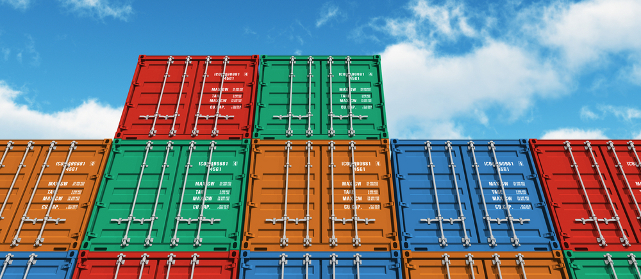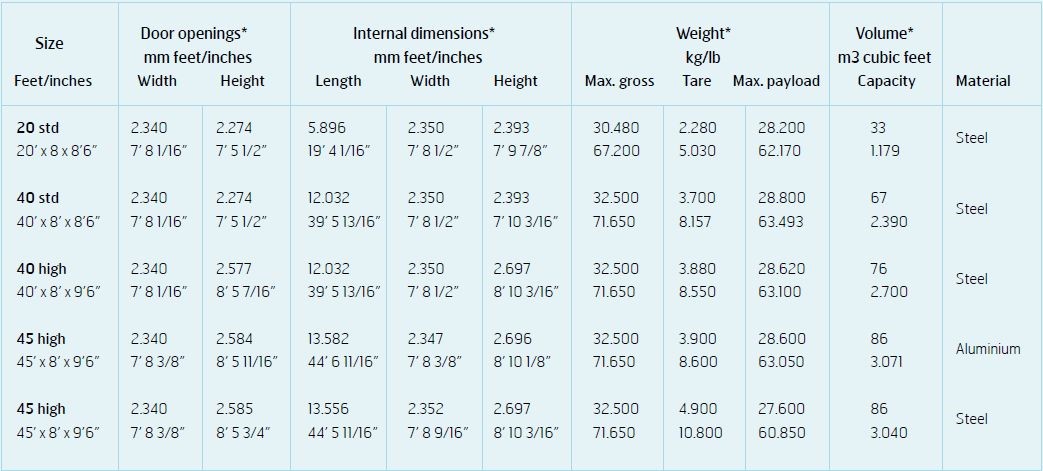 If you have international freight shipping needs, chances are good that you have been introduced to the world of shipping containers. Shipping container sizes, markings, and specifications are generally standardized to comply with international standards (ISO) so that containers can be used across all modes of transportation. The ISO standards cover details about shipping container sizes and weights. Common container specifications are summarized in the table shown below. Most containers are either 20′, 40’, or 45′ in length. Additionally, some containers have additional features to accommodate the product being shipped, such as open tops, refrigerated units, flat racks, and platforms.
If you have international freight shipping needs, chances are good that you have been introduced to the world of shipping containers. Shipping container sizes, markings, and specifications are generally standardized to comply with international standards (ISO) so that containers can be used across all modes of transportation. The ISO standards cover details about shipping container sizes and weights. Common container specifications are summarized in the table shown below. Most containers are either 20′, 40’, or 45′ in length. Additionally, some containers have additional features to accommodate the product being shipped, such as open tops, refrigerated units, flat racks, and platforms.

A shipping container is an empty rectangular cube measured by its length, width, and height (LxWxH). Two different sets of sizes need to be considered when arranging for transportation: internal and external. The internal dimensions will show space available for storage. It can be deemed as a useful storage space. The external dimensions are of more concern when the surrounding area is limited and may restrict the movement or convenient placement of boxes. For instance, a high cube container with an external height of 9’6” lying on a chassis may exceed warehouse gates or road overpasses. Container door sizes also need to be considered so shippers know whether a large cargo unit can be moved smoothly into and out of the container.
How many cubic meters (CBM) there are inside a container will determine its gross capacity. Due to the corrugated wall and roof, unless you load bulk or grain cargo, which can fill almost all available space, you can only utilize the space that will fit your specific commodity size and shape (e.g. bags, crates, pallets, etc.). When calculating loadable cargo volume, shippers should subtract the wasted space. That means the net cargo volume to be loaded is likely smaller than the gross volume capacity. Aside from capacity, the type of weight (i.e., gross, tare, payload) is also important when shipping with containers. Gross weight (also called gross mass or rating) is the total maximum weight of the container itself (tare weight) and the cargo (payload) loaded inside it.
When you work with Logistics Plus, our global logistics experts can help you find and source the right containers to fit your commodity or products. Whether you need a full container, or could potentially save money by using only a partial container and sharing the space with another shipper, Logistics Plus can make it happen. We can also help you find affordable air, ocean, ground, or rail transportation – or a combination thereof – to get your shipment delivered anywhere in the world – on time and intact.
Click the button below if you have an upcoming international shipment you’d like us to start working on for you. You can also email us at pricing@logisticsplus.com or give us a call at 1.866.335.7623

